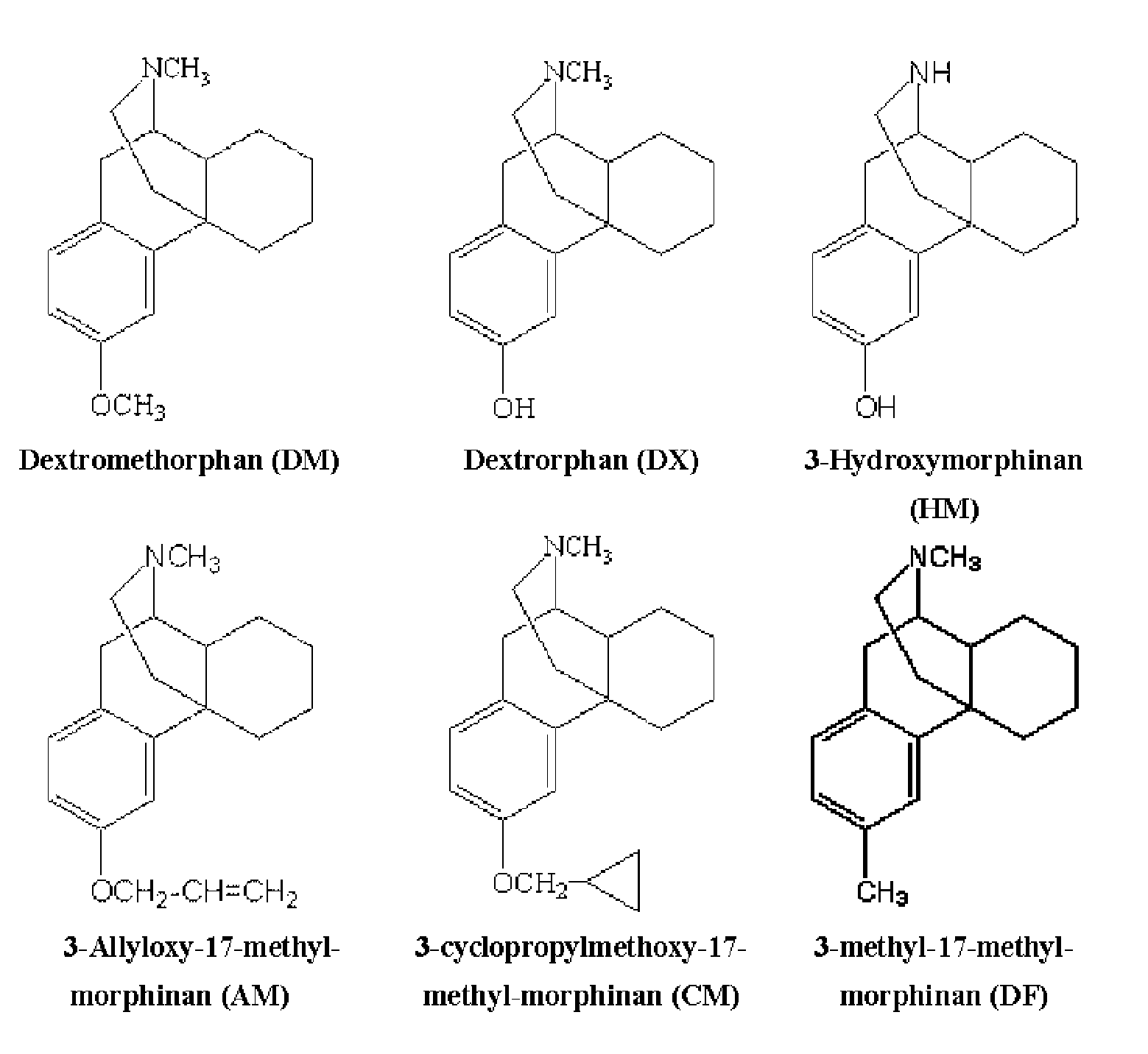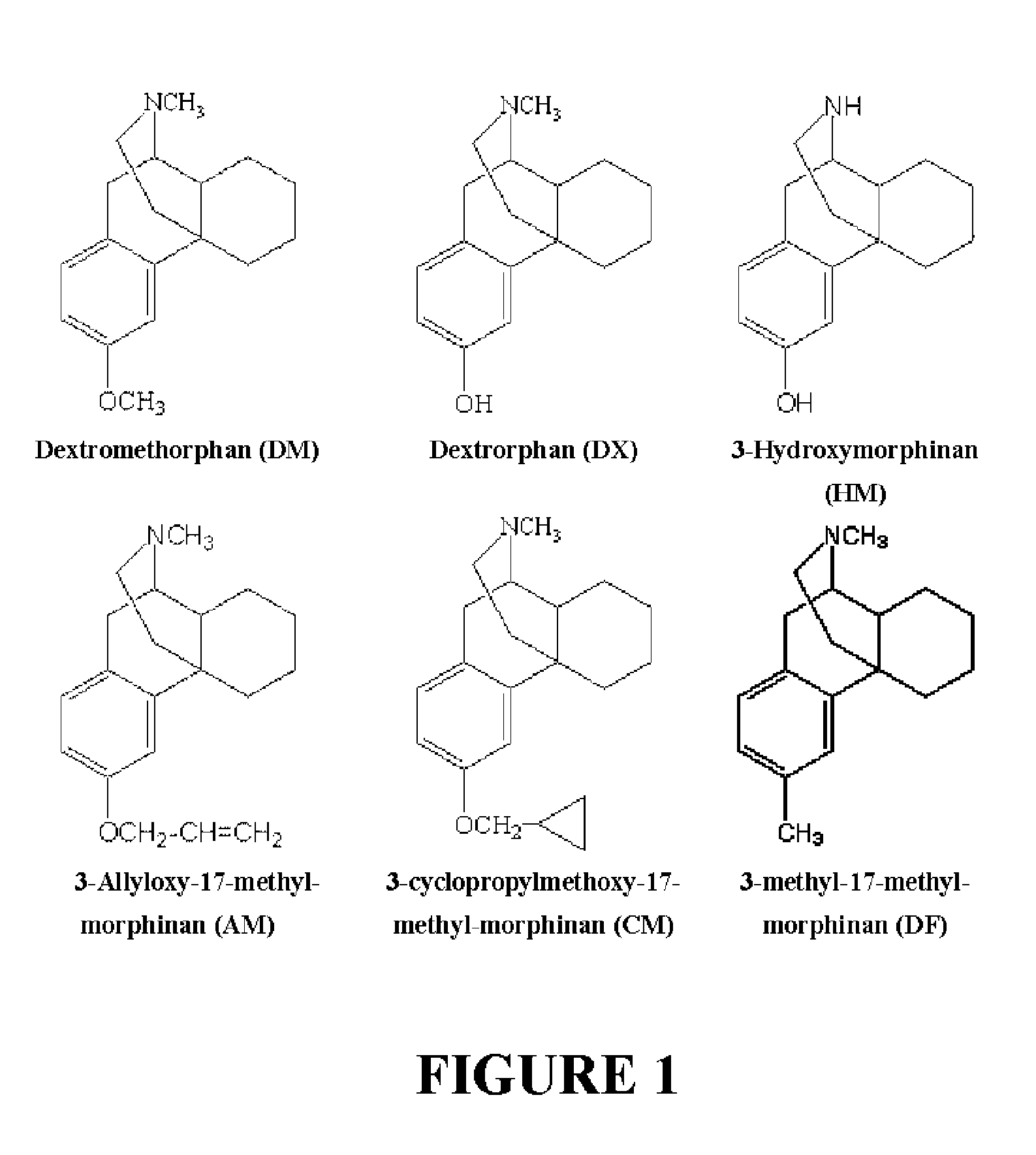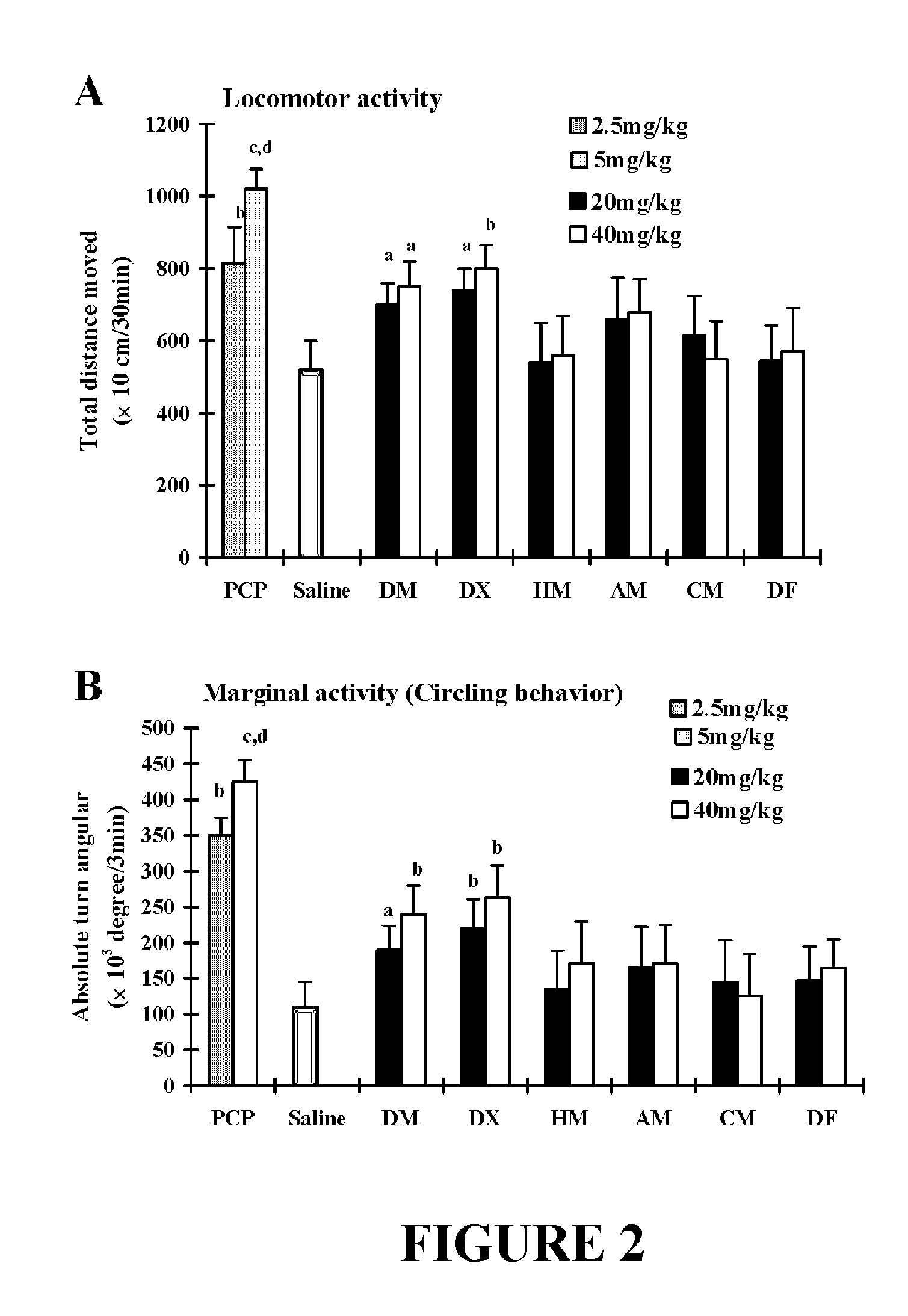Neuroprotective properties of dextrorotatory morphinans
a neuroprotective and morphinous technology, applied in the field of neuroprotective compounds, can solve problems such as limiting clinical usefulness, and achieve the effects of preventing the decrease of dopamine production, effective anti-parkinsonism, and effective anti-intoxication
- Summary
- Abstract
- Description
- Claims
- Application Information
AI Technical Summary
Benefits of technology
Problems solved by technology
Method used
Image
Examples
example 1
Preparative Examples
Preparative Example 1.1
Preparation of 3-hydroxy-N-(tert-butyloxycarbonyl)morphinan 2 and 3-O-(tert-butyloxycarbonyl)-N-(tert-butyloxycarbonyl)morphinan 3
[0105]
[0106]To a solution of 3-hydroxy-N-(tert-butyloxycarbonyl)morphinan (200 mg, 0.62 mmol) in dry dichloromethane (3.0 mL) were added triethylamine (250 μL, 1.83 mmol) and Boc2O (190 mg, 0.88 mmol) sequentially and the mixture was stirred at room temperature. After 2 h, solvent was removed under reduced pressure and the residue was purified by silica gel column chromatography to yield Compound 2 (168 mg, 79%) and compound 3 (43 m, 16%): 1H NMR (300 MHz, CDCl3) δ7.04˜7.08 (3H, m); 3.73 (2H, m); 3.68 (1H, m); 3.08 (2H, m); 2.15 (1H, m); 1.83 (2H, m); 1.50˜1.70 (8H, m); 1.40 (9H, s) (for 2), δ7.05˜6.83 (3H, m); 4.30 (0.50H, br) 4.00 (0.50H, br); 3.85 (0.50H, m); 3.68 (0.50H, m); 3.05˜3.25 (1H, m); 2.50˜2.70 (2H, m); 1.65˜1.80 (5H, br); 1.57 (9H, s); 1.49 (9H, s); 1.15-1.30 (6H, m) (for 3).
Preparative Example 1.2
P...
experimental example 1
Neuroprotective Effect of Morphinan
experimental example 1.1
Animals and Drugs
[0211]All animals were treated in strict accordance with the NIH Guide for the Humane Care and Use of Laboratory Animals (NIH Guide for the Care and Use of Laboratory Animals, NIH Publication No. 85-23, 1985). Male C57BL / 6 mice (Bio Genomics, Inc., Charles River Technology, Gapyung-Gun, Gyeonggi-Do, Korea) weighing about 30±3 g were maintained on a 12:12 h light:dark cycle and fed ad libitum. They were adapted for 2 weeks to the above conditions before carrying out the experiments. Dopaminergic neurotoxins used in this study were 1-methyl-4-phenyl-1,2,5,6-tetrahydropyridine (MPTP; Sigma, St. Louis, Mo.), lipoploysacchrade (LPS; Sigma Chem , St. Louis, Mo.), and methamphetamine (MA; NIDA / NIH, USA).
[0212]Male mice received daily MPTP injections (20 mg free base / kg, s.c.) for 7 consecutive days. Each morphinan was administered 30 min prior to every injection of MPTP for last three days (from day 4th to day 7th). Animals were sacrificed 24 h after the last MPTP treatmen...
PUM
| Property | Measurement | Unit |
|---|---|---|
| temperature | aaaaa | aaaaa |
| temperature | aaaaa | aaaaa |
| volume | aaaaa | aaaaa |
Abstract
Description
Claims
Application Information
 Login to View More
Login to View More - R&D
- Intellectual Property
- Life Sciences
- Materials
- Tech Scout
- Unparalleled Data Quality
- Higher Quality Content
- 60% Fewer Hallucinations
Browse by: Latest US Patents, China's latest patents, Technical Efficacy Thesaurus, Application Domain, Technology Topic, Popular Technical Reports.
© 2025 PatSnap. All rights reserved.Legal|Privacy policy|Modern Slavery Act Transparency Statement|Sitemap|About US| Contact US: help@patsnap.com



